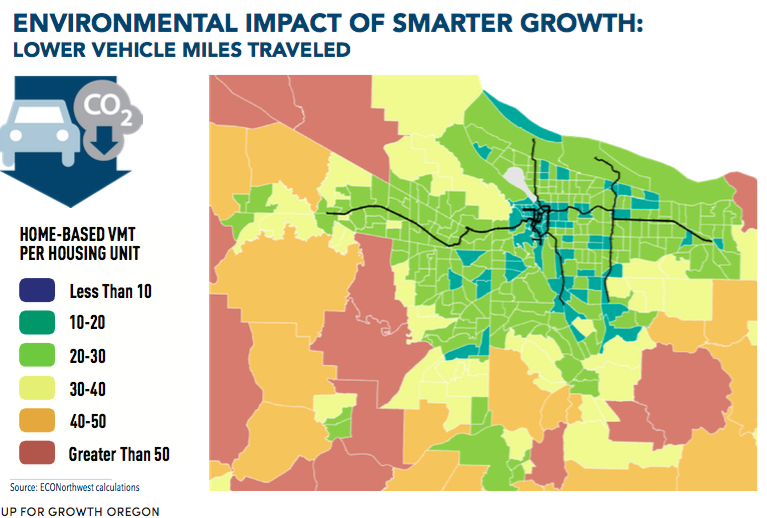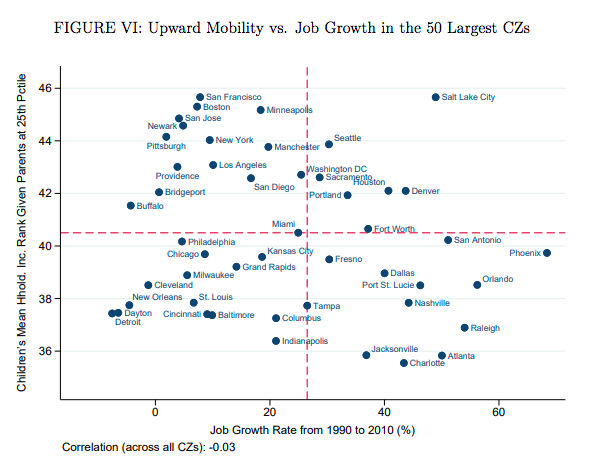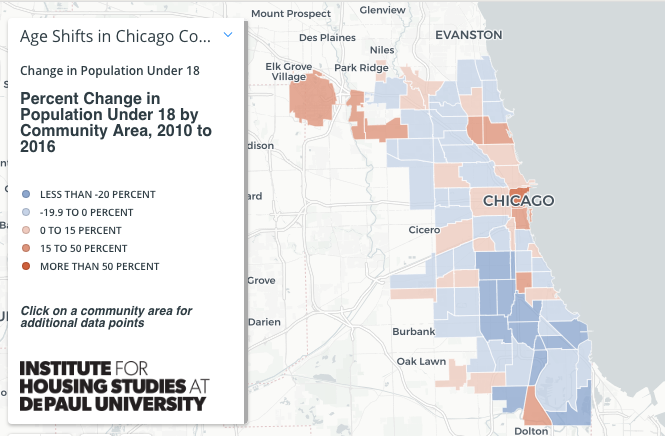What City Observatory did this week
1. Now we are four. October 17 marked City Observatory’s fourth birthday. We celebrated with a shout-out to our founders, funders and partners, and reflected on what we think the most important lessons have been for cities in the past quadrennium. Regular readers will know that we view our key problem as a shortage of cities, in the face of growing demand for urban living. Problems that manifest themselves in the form of housing availability and affordability, and perceived issues of gentrification and displacement trace back to the fact that more and more Americans want to live in great urban neighborhoods, and that we haven’t built enough of them.

2. Fresh evidence for Portland’s green dividend. More than a decade ago, we coined the term “green dividend” to describe the economic benefit residents reap when they live in a city where they don’t have to drive everywhere, or long distances. Portland, for example, drives about percent less than the national average, which produces a cool one billion dollar per year economic savings for Portland households. Two new pieces of evidence confirm this green dividend calculation. Data from the Bureau of Economic Analysis shows that Oregonians spend about 15 percent less on cars and gasoline than their counterparts nationally. A new scenario planning exercise from Up for Growth–researched by Portland-based economic consulting firm ECONW–shows that shifting to a denser, smart growth pattern in Portland would reduce vehicle miles traveled, and the green dividend from this would be something on the order of $187 million per year.
3. Job creation seems to have little effect on economic mobility. There’s a widespread belief that job-creating economic development programs can help address address poverty, based on the “spatial mismatch” hypothesis, i.e. that poverty is caused by a lack of nearby jobs and job growth. Raj Chetty and his colleagues turn their big data on intergenerational economic mobility to answering this question and find a surprising answer. There’s actually no correlation at either the neighborhood or the metropolitan level between proximity to jobs and job growth and the tendency of kids to escape poverty. Instead, the best predictors of intergenerational economic mobility seem to be whether people in the neighborhood are employed, and whether a neighborhood has strong social capital. These findings suggest that economic integration and building networks and the civic commons, rather than simply focusing on job creation, is the critical part of fighting poverty.
Must read
1. Why HUD is too feeble to get suburbs to drop exclusionary zoning. Lately, there’s been a lot of media attention to proposals that the federal Department of Housing and Urban Development could get cities and counties to back away from exclusionary zoning practices (like large minimum lot sizes and apartment bans), but threatening to withhold federal funds. The Brookings Institution’s Jenny Schuetz turns a careful accountant’s eye to that idea and finds that HUD has almost no leverage with the most exclusionary jurisdictions. The reason: only trivial amounts of federal funds go to the wealthy suburbs that are the worst offenders. Most HUD money, like community development block grants, goes to larger cities and urban counties, that are generally already shouldering more than their fair share of affordable housing.
2. Kids in cities? DePaul University’s Institute for Housing Studies has a detailed look at the steadily shrinking number of kids growing up in the City of Chicago. Since 2010, the city has lost more than 40,000 children. But the citywide declines mask a very uneven pattern of change. The number of children is actually increasing in some higher priced neighborhoods near the loop and on the city’s North side. Meanwhile, declines in the number of children have been greatest in lower-priced neighborhoods on the city’s South and West sides. The loss of kids (really, families with kids) is a dire sign for the future of these neighborhoods.
3. Rents down nationally. Real estate analytics firm Zillow reports that nationally, over the past 12 months, average rents in the U.S. have declined–by about 0.2 percent. That’s not a big number, but it comes after six years of steady increases, and is evidence that the cumulative additions to housing supply in the past few years are beginning to be felt in the marketplace. Per Zillow, Portland had the biggest decline in rents of any major metro, with a decline of 2.3 percent over the past 12 months.
4. Must watch: Alan Mallach webinar on inequality in older cities. We’re big fans of Alan Mallach’s book The Divided City: Poverty and Prosperity in Urban America.” If you haven’t read it yet, you can get a peak at some of the author’s most important arguments in a free webinar sponsored by the Center for Community Progress. Registration information is here.
New Knowledge
Is congestion pricing fair? A regular feature of debates about congestion pricing is that it is somehow unfair to the poor, and therefore inequitable A recent paper from Jonas Eliason, of the Swedish Royal Institute of Technology takes a direct look at this question using survey research from four different European cities, Stockholm, Helsinki, Gothenberg and Lyon. It finds that their is virtually no correlation between income level and public perception that road pricing is unfair. The paper concludes:
. . . the equity variable is not significant (in any of the cities): there is, surprisingly, apparently no correlation between respondents’ opinions about equity and their opinions about congestion pricing. In the light of this, the preoccupation with congestion charges’ equity effects is rather remarkable – unless it is simply because supposedly negative equity effects is a more convenient argument against congestion charges in public debate than self-interest arguments.
These data suggest that while equity concerns make nice talking points, there’s little public sentiment behind that argument. The study finds that, regardless of income level, other values and beliefs, like self-interest (whether one would pay the toll or not), environmentalism and anti-tax sentiment are much bigger factors in shaping attitudes about road pricing than personal income.
In the News
The Columbus Dispatch featured the employment growth analysis from our Surging City Center Jobs report in an article examining that city’s battle with Austin, Texas to be the future home of the current MLS Columbus Crew.




